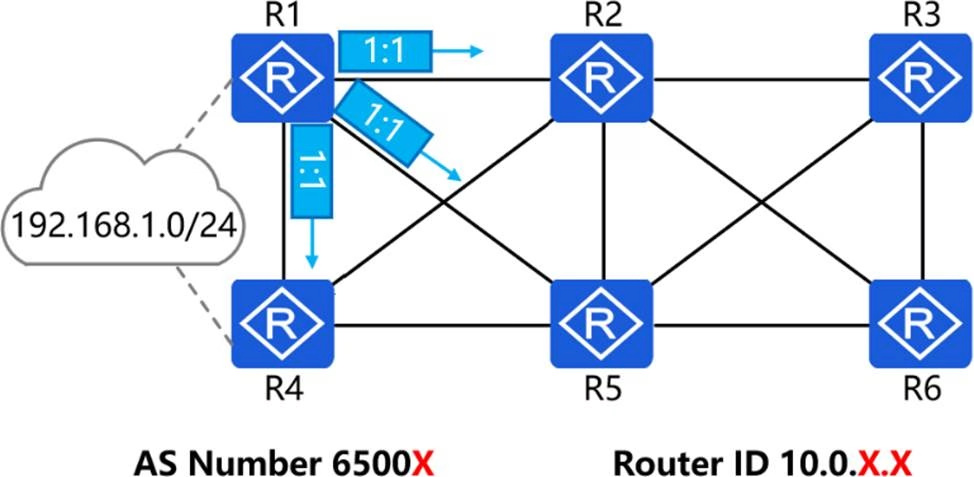In the network shown in the figure, adjacent routers use directly connected interfaces to establish EBGP neighbor relationships. The Router ID of each device is 10.0.0.X, and the AS number is 6500X, where X is the router number. R1 and R4 both have static routes to 192.168.1.0/24, which are imported into BGP. R1 adds the community attribute value (1:1) when sending routes to its neighbors. All routers in the network are enabled to pass community attributes. Which of the following can make the traffic path from R3 to 192.168.1.0/24 pass through R4?
In the network shown in the figure, adjacent routers use directly connected interfaces to establish EBGP neighbor relationships. The Router ID of each device is 10.0.0.X, and the AS number is 6500X, where X is the router number. R1 and R4 both have static routes to 192.168.1.0/24, which are imported into BGP. R1 adds the community attribute value (1:1) when sending routes to its neighbors. All routers in the network are enabled to pass community attributes. Which of the following can make the traffic path from R3 to 192.168.1.0/24 pass through R4?

A . Configure the routing policy on R4 to reject routes with a community attribute value of 1:1.
B . Configure a routing policy on R5 to reject routes with a community attribute value of 1:1.
C . Configure a routing policy on R3 to reject routes with a community attribute value of 1:1.
D . Configure a routing policy on R2 to reject routes with a community attribute value of 1:1.
Answer: D
Latest H12-831_V1.0-ENU Dumps Valid Version with 231 Q&As
Latest And Valid Q&A | Instant Download | Once Fail, Full Refund

